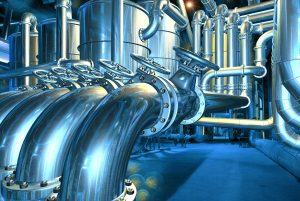Written by Guest Blogger, Richard Parapar
In our last blog, we provided an introduction to the first two of eight best practices for effectively retrofitting manufacturing systems in a pharmaceutical production facility. In this one, we’ll explore the next two best practices and how they’ve been used effectively in our Genentech case study.
#3: Explore automated migration tools to transfer data between systems.
Retrofitting legacy systems can be challenging due to the amount of configuration information that exists in the old system and will need to be re-entered into the new system. Fortunately, there is a wealth of software tools available that are specifically designed to move configuration and systems data from one platform to another, and often the major software applications will already have similar capabilities built in, such as XML export/import functions. Utilizing existing data transfer tools, and exploring opportunities to fill in gaps with customized tools, can help maintain data integrity between legacy and new systems and smooth the retrofit process.
The benefits of this practice are clear, and numerous. Automated transfer of data eliminates the potential for transcription errors or omissions, reducing online testing requirements and overall system downtime. It also makes transferred data more secure and safeguards intellectual property such as recipe procedures, product structures, and other information essential for manufacturing. Testing a software migration tool is typically less expensive and less time-consuming than verifying manually-entered data. And an automated migration can be performed multiple times, so system managers can build confidence that the critical data has been migrated reliably and correctly.
Genentech successfully applied this practice during their retrofit, creating a database migration tool to transfer all the relevant configuration information from the legacy software application to the new application, which made the data transfer both more reliable and efficient, as creating and testing the software tool took significantly less time than it would have to manually re-enter the data.
#4: Plan to synchronize parallel system development and documentation systems.
When a retrofit occurs, one of the biggest challenges facing system managers is the need to maintain the legacy system, and keep it operating at fullest capacity, while simultaneously dealing with development of the new system. The existing system will still require regular updates to ensure reliable functionality and maintain compliance with regulatory and safety requirements. System managers, then, should have a working plan to manage development of both systems concurrently, at least until after the transition is complete.
Managing parallel development and documentation streams
The major benefit of having such a plan is that it provides the business with flexibility, so it can continue adapting to changing user requirements, compliance regulations, and market conditions. In short, it keeps the business operable and responsive even while upgrades are being developed.
In Genentech’s case, because the retrofit process was expected to take two to three years, it was unfeasible for modifications and updates to existing systems to be completely suspended. The team executing the retrofit employed multiple synchronized “development cycles” to ensure ongoing changes to user requirements and system functionality were implemented in both old and new systems.
Be sure to check out the full blog series!
- How to Know when to Upgrade Your Pharmaceutical Manufacturing Systems
- Genentech: How One Company Made Retrofitting Work
- Getting Started: Best Practices 1 and 2 for a Pharmaceutical Manufacturing Upgrade Project
To read more about how to execute these best practices in your facility, download and read our white paper here!
Have you seen either of these best practices successfully used? Would you consider adopting them for your own facility? Tell us about it in the comments below.
Richard Parapar has over 30 years experience delivering advanced automation solutions for the life sciences, petrochemical refining, high purity gas production, and consumer food processing industries. Richard recently retired after over 21 years at Genentech/Roche as a Senior Principal Engineer and Technical Lead for Automation Engineering, where he was responsible for delivery of major strategic automation projects and shaping the long term direction of manufacturing execution and process automation systems for Genentech.


